Amazon Product Research: Best Guide to Do It
In any business field, product research is the most crucial step because the product you choose is the foundation of your business. And so does business on Amazon. You want to find a product that many people are interested in, and not too competitive. One common mistake that many people make is to choose the products they like, or they think they do well.
We don’t want to take a risk, and we recommend that you should rely on data analysis to determine what you will sell on Amazon. And we call that Amazon product research. So, what is Amazon product research, and why should research products on Amazon before selling? In this post below, we’ll talk about Amazon Product Research: Best Guide To Do It. Read on to explore them!
What is Amazon product research?
Amazon Product Research is a system for analyzing and researching products. This system aims to help you find a product with the highest market demand with the least competitive level to sell on Amazon. From there, you can gain maximum profits for your store. Typically, the result of this system will be a product that is no longer too hot on the market or new products that have just appeared on the market.
When you find a product that fits all your product research criteria, it’s the one you should focus on investing. Thus, after completing the product research phase, you can move on to the next sourcing stage for your Amazon business.
Related Posts:
- How to Sell on Amazon? A Guide To Start Quickly!
- 5 Steps to Fulfill Orders with Fulfillment by Amazon on Shopify
- Can I Dropship from Amazon to Shopify?
- Amazon Listing Optimization: Ultimate Guide For Beginners
- How To Sell Amazon Products on Shopify
- How to Contact Third-Party Sellers on Amazon
Why you should do product research on Amazon
So why should you do research products on Amazon before selling? Is it easier to just pick up a product and sell it on Amazon? The answer is no. Not researching products in advance and selling the things you want will only make your business more difficult.
Firstly, not researching products before selling will easily lead to the situation that your product has no demand in the market, meaning that no one wants to buy that product, or your product has too many similar items. This is absolutely not good for your business at all.
What’s more, the platform you use to sell is Amazon - a platform with many members and products from all around the world. Whether you are researching products but taking research data from traditional sales or other e-commerce platforms, will it apply to Amazon? Of course not.
So using the Amazon product research tool will help you solve both of these problems at once. You use a system that helps you research the most accurate data about items on the e-commerce site you’re trading. You will get the exact data and results on the products with a large market, low competitiveness to consider before starting your business on Amazon.
How to do Amazon product research?

You already understand the benefits of Amazon product research so why hesitate without using it. So here are our detailed instructions on how to use Amazon product research.
Step 1: Decide the business path
It is always important to consider which direction to choose for your business. Setting directions will help you get to the end of your chosen path. Decide where you want your business go to? Will you continue to maintain your small business model or will you expand it into an empire? Do you plan to resell the store on Amazon?
By doing so you can set actions to achieve your goals. In general, it is very simple to sell products, but to maintain them in the long run and make them bigger is a lot of work. People will usually start by retailing, then choose the two paths that are ceding the store or developing their own brand products when they are familiar with the sales process on Amazon.
Step 2: Set criteria for product sources.
To find a potential product you need to identify what you are looking for and filter out the items that meet your requirements. Each person, depending on the conditions such as capital, business type, aspirations, will have different criteria. There will be no general formula for you to set product criteria, but when you take this step you can consider the following factors:
-
Price point: Regular workers only cost from $20 to $150 per product. Very rarely do they spend more than $150 on a product from an unknown company.
-
Competitiveness: The lower the competitiveness, the more chance you have of selling goods. You can rate this by looking at the number of reviews on the bestselling products.
-
Demand: You need to calculate how many average products are ordered in each month. You can use the sales estimator to get rough data on the number of top-ranking items on sale.
-
Seasonality: You should consider whether the item has a regular volume of demand throughout the year or it will be purchased suddenly at special times of the year.
-
Weight: The bigger and heavier the item, the higher shipping costs. Small and light products do not cost you too much but they are very competitive.
-
Profit margin: You need to find out how much money you can make from the product. This profit must be calculated when you include expenses such as product testing, photography, promotion, etc
Step 3: Use the data to conduct product research and find opportunities to sell items
Remember to always conduct research based on the criteria you set out in the previous step. You will need to start keeping track of all the different products you want to research. You can create your own spreadsheet to save the information you need and make comparisons. In addition, you can use a number of tools to make product research much easier.
Step 4: Contact potential suppliers
Once you’ve chosen a product that is suitable for your criteria, it’s time to find the source for that product. If you want to become an agent, you should contact the manufacturer or brand that represents the products you want to sell. However, there are many different ways to find source products - such as contacting distributors and working with local contract manufacturers.
Best tactics to successfully do product research on Amazon
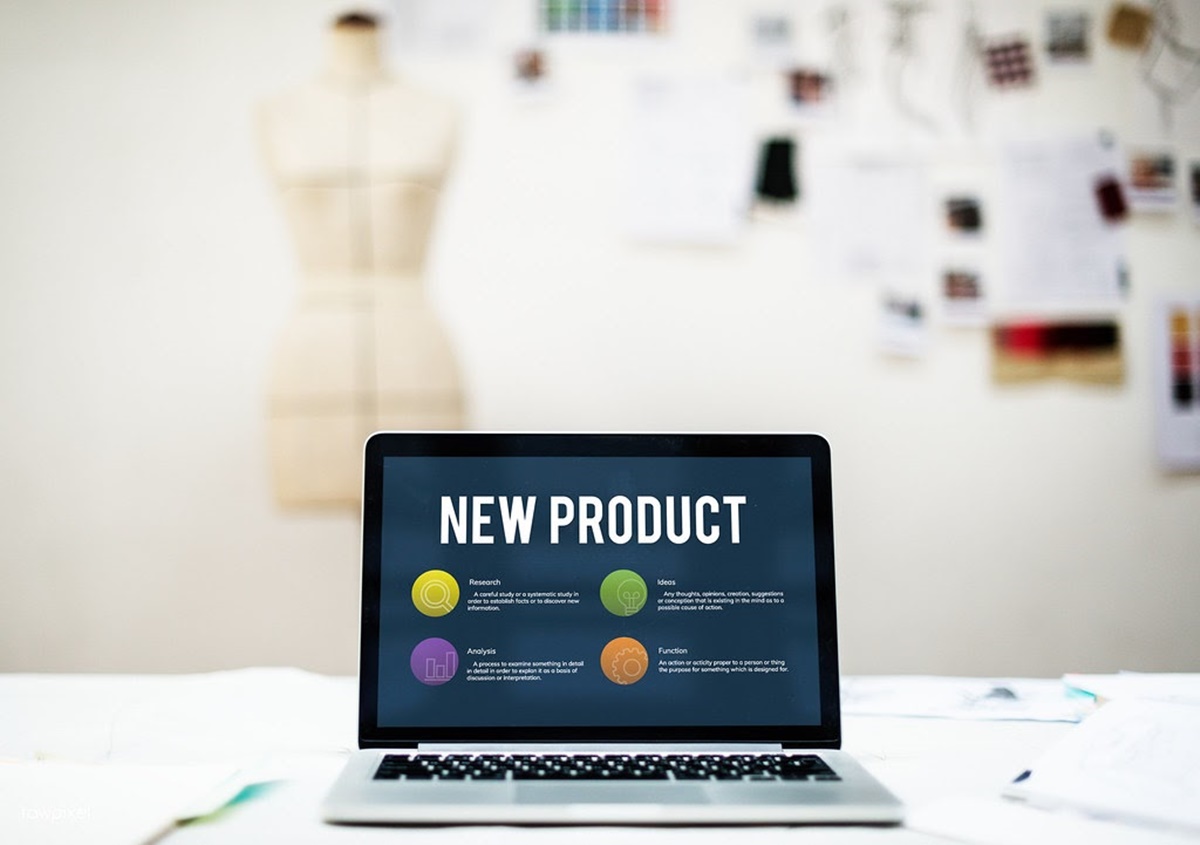
If the above steps are still a bit vague for you. You do not know how to do it. Do not worry. I will introduce you to research strategies for doing Amazon product research successfully.
1. Passions, Interests, Hobbies, and Problems
One of the easiest ways to start product research is to observe real-life needs based on the following four keywords:
-
Passions: Things you love (Example: Food, clothes, travel, etc)
-
Interests: Things you are interested in and look forward to (Example: Travelling to Japan, Worldcup, etc)
-
Hobbies: Activities you do for entertainment (Example: cooking, reading, shopping, etc)
-
Problems: The problems that you have to experience in daily life (Example: foot pain, broken furniture, etc)
Choosing a product that you love and having a good understanding of it is a great selling proposition. You can attract customers a lot more effectively than competitors when selling items you already understand and love because of the fact that you have engaged in the subconscious behavior of your target customers. Products have a relatively high-profit margin in this niche because customers often buy to satisfy their passion without being too concerned about the price. Therefore, you need to continuously research and come up with the best ideas to satisfy customer needs in this segment.
2. Research the opponent
In parallel with product research, sometimes you need to research your competitors as well. But you should understand that researching your competitors or even following them does not mean copying all their sales or copying their promotions and promotions. That will only cause further damage to you and make you forever a follower. What you should keep track of is how your competitors are working to come up with optimal options for your sales. There are 3 common ways to keep an eye on your opponent
Method 1: Through Competitor’s PPC Campaigns
You can find out which product is trendy right now by checking what other sellers are advertising on Amazon PPC. Whenever you see the word Sponsored on Amazon, that means the product is being advertised by the seller through PPC. If the product is being advertised by the seller, the chances are high that it is quite profitable.
Method 2: Through Competitor’s Catalogs
To see another seller’s product catalog, click their ** Seller Display Name ** from any product listing. When using this strategy, fewer times the better. You will want to target smaller sellers that you can compete with.
Method 3: Through Giveaway / Review Clubs
This strategy is only for those who have chosen the product and start selling it on the market. If you’ve been selling on Amazon for a while, you might be familiar with gift-giving/review clubs. These are essentially product review/feedback communities where you can offer strong coupons for honest feedback. You can rely on competitors’ giveaway that devises your own customer care strategies.
3. Ask Your Current Suppliers
If you already have a successful Amazon product, this is probably the most effective product discovery tactic you’ll find. Ask your current suppliers about their most manufactured products, they will give you great ideas.
It is simply that the more products you buy from any source, the lower your cost per unit. This means you can achieve enormous discounts without depending on any product. And that means you can develop a competitive price advantage that others can match.
Best product research tools and apps to find opportunities on Amazon
In today’s technologically advanced era, leveraging tools, and apps to conduct product research on Amazon is the key to success. There are many different tools to help you make the right choices. Here are 5 software that we consider useful for product research on Amazon.
1. SellerApp
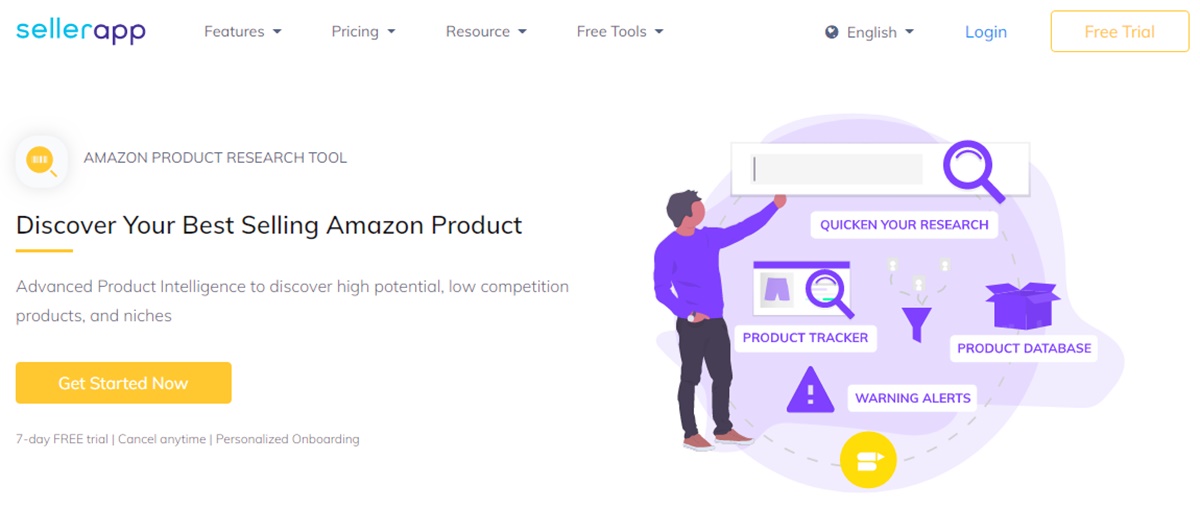
SellerApp provides intuitive features, instant insights, and smart shortcuts to help you research products optimally. In addition, this software also provides you with accurate data taken from the most reliable source.
2. ZonGuru
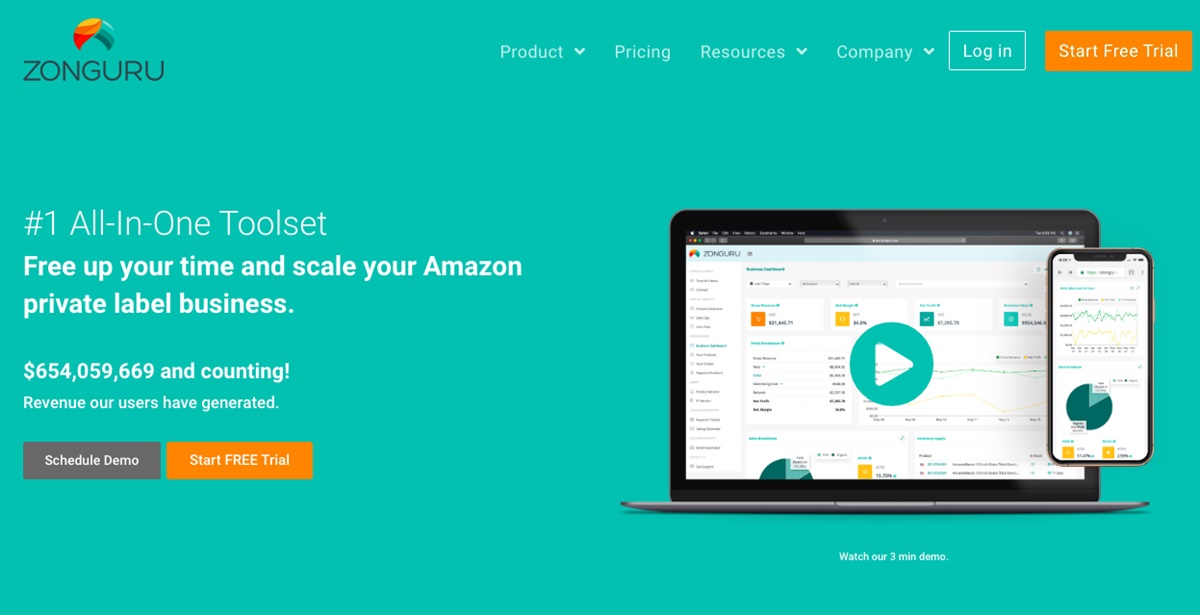
ZonGuru is Amazon’s versatile selling tool that provides great data solutions to help you find the best suppliers, research best-selling products, and explore valuable market opportunities.
3. Unicorn Smasher
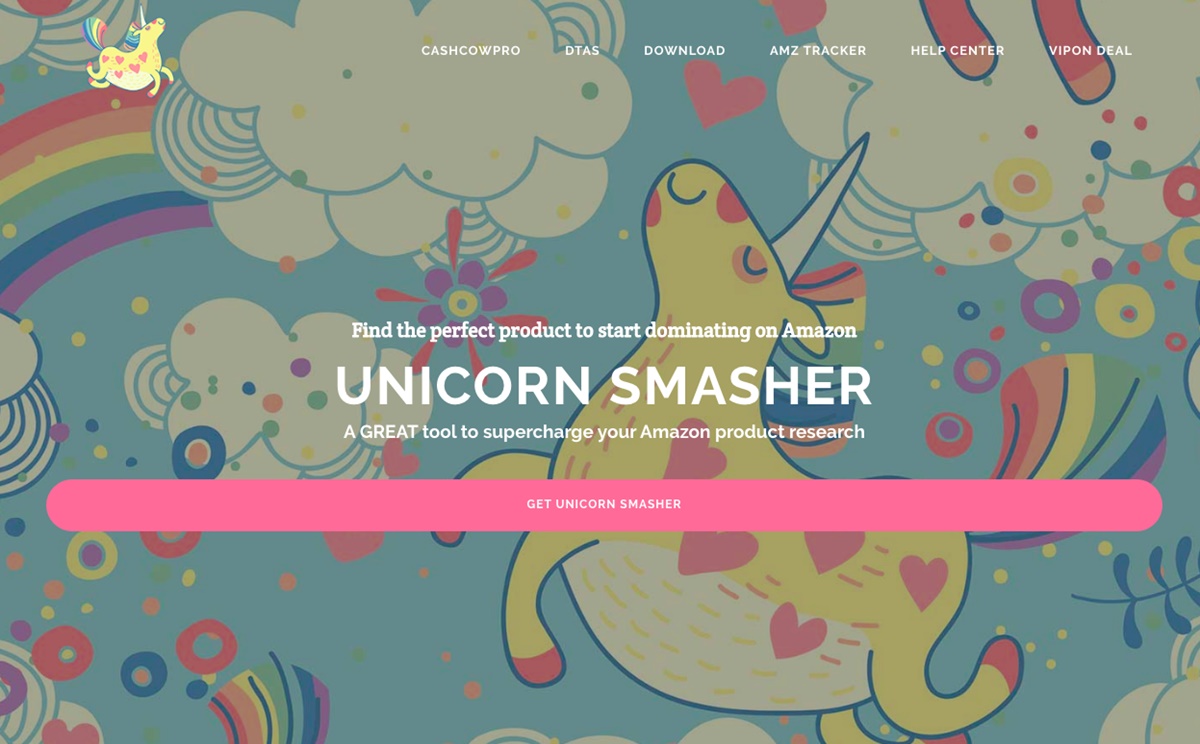
Unicorn Smasher is an Amazon product research tool from AMZ Tracker. It provides solutions for sales estimates, comprehensive data, and more. It has a free tool for Amazon sellers to accelerate your Amazon product research.
4. AMZBase
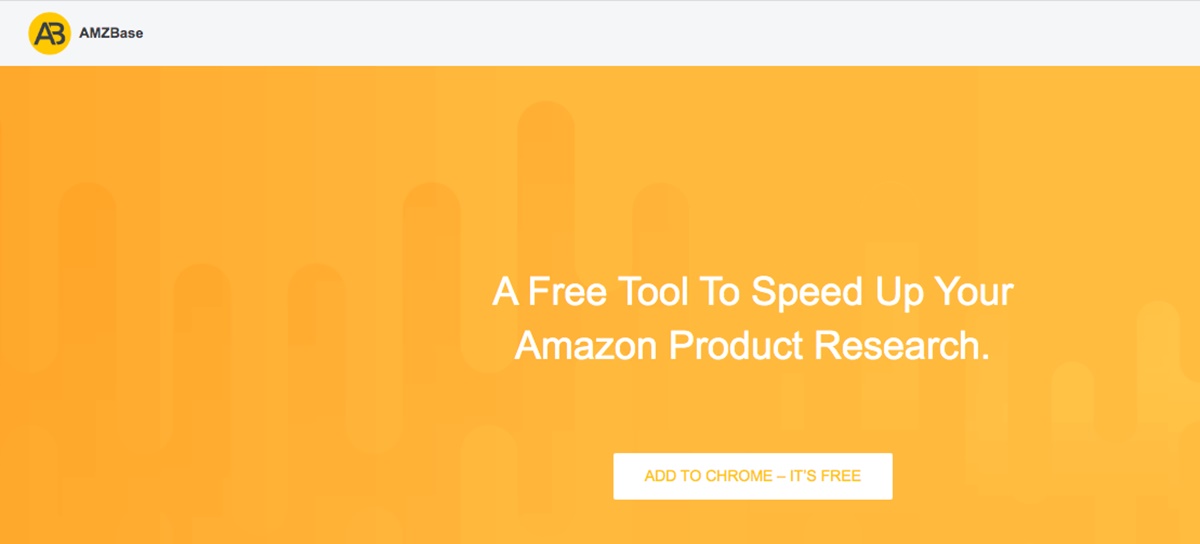
AMZBase is a free tool to assist you in the process of finding products for sale on Amazon. It helps sellers quickly acquire ASIN and describe the title of the listing on Amazon. In addition to providing immediate access to Alibaba, AliExpress, eBay, and Google search engines, AMZBase also calculates FBA fees to estimate your potential profits.
5. FBA Wizard Pro
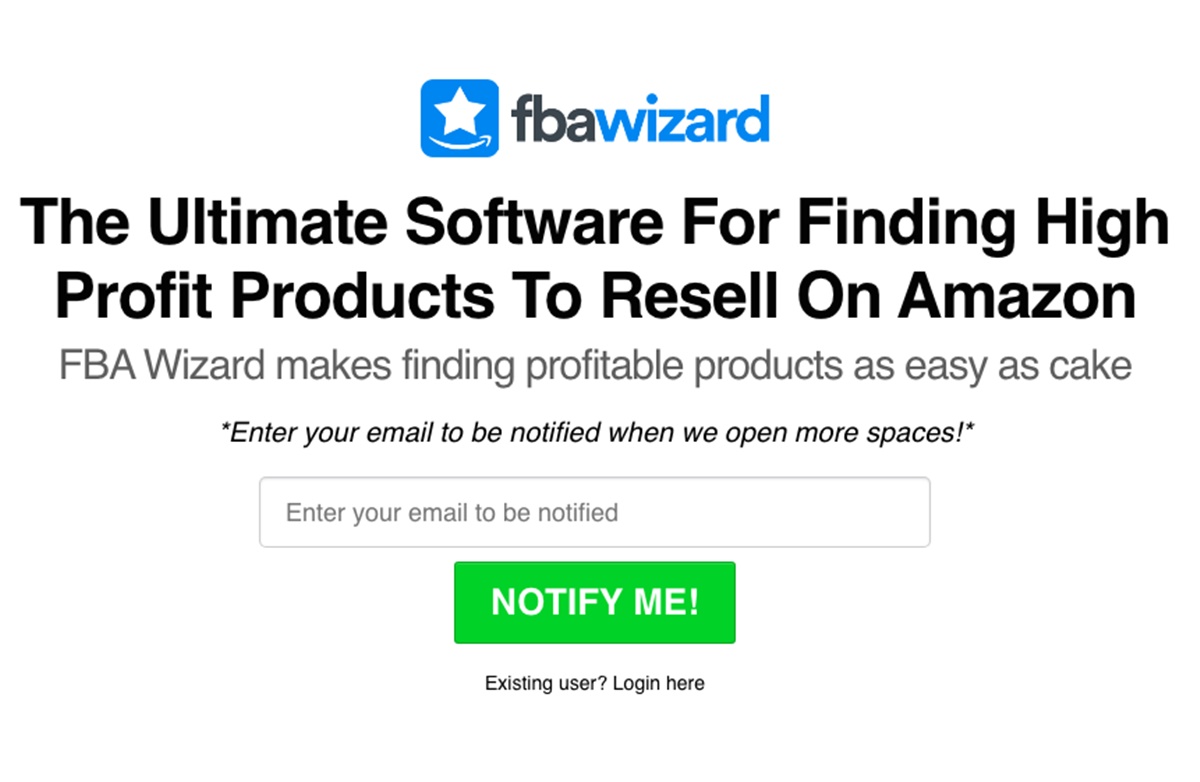
FBA Wizard Pro is software that helps you easily find potential products for sale on Amazon and eBay. It works in the US, UK, and Canada and helps find products from hundreds of UK and US favorite retailers and wholesalers.
Read more:
- 9+ Best Dropshipping Product Research Tools For Winning
- 12 Best Dropshipping Tools to Help You Win on eBay
- How to Find Products to Sell on Amazon
Conclusion
To sum up, product research has never been unnecessary in business in general and on Amazon in particular. So, hopefully, the above instructions and explanations have partly helped you understand Amazon product research and know-how to apply it well in your business. Good luck!
New Posts






